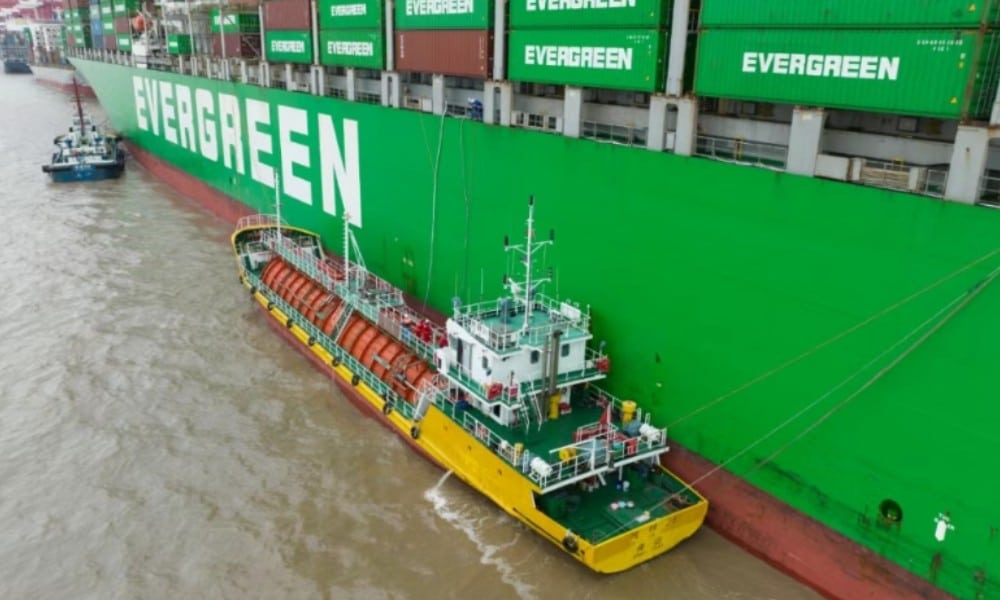Ship-to-ship CO2 transfer makes debut in China
Breakthrough in Carbon Capture at Shanghai Port

In a groundbreaking achievement, the world’s first ship-to-ship offloading of liquefied carbon dioxide (LCO₂) has taken place at Shanghai’s Yangshan Port. This innovative operation involved the Evergreen vessel Ever Top, which has been retrofitted with an onboard carbon capture and storage (OCCS) system. The successful transfer of captured CO₂ to the barge Dejin marks a significant advancement in carbon logistics within the shipping industry.
Innovative Technology and Economic Viability
The OCCS system, developed by the Shanghai Marine Diesel Engine Research Institute, is capable of capturing over 80% of a vessel’s carbon emissions with an impressive purity level of 99.9%. This technology not only liquefies the captured gas but also facilitates its transfer at sea, eliminating the need for specialized port infrastructure. As a result, CO₂ offloading becomes more flexible and accessible, potentially revolutionizing how the shipping sector manages carbon emissions.
Retrofitting the Ever Top with this advanced system cost approximately $10 million, which is significantly lower than the expenses associated with converting vessels to methanol or ammonia propulsion. Stakeholders believe this makes the OCCS system a commercially viable solution for reducing emissions. Furthermore, the captured CO₂ is not simply stored; it is sold into industrial markets, with projections indicating that each vessel could generate up to $8 million in annual revenue.
One of the major challenges in maritime carbon capture has been the difficulty of offloading captured gases at ports. The ship-to-ship transfer method offers a practical solution, allowing CO₂ to be offloaded mid-voyage or near ports. This approach utilizes smaller, agile carriers that can operate closer to end-use markets, thereby enhancing the efficiency of carbon logistics in the shipping industry.
